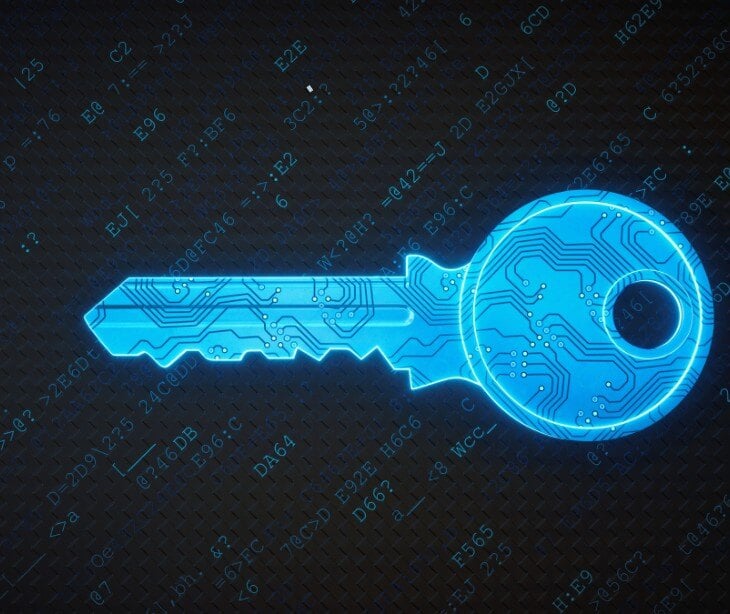
While encryption is about protecting the confidentiality of data and ensuring only those with the correct key can access the original information, hashing is focused on verifying data integrity and authenticity.
What is encryption?
Encryption converts readable data, or plaintext, into an unreadable format, known as ciphertext. The process uses an algorithm and a key to guarantee that only authorized individuals can access the data. There are two main types of encryption: symmetric and asymmetric.
Symmetric encryption
In symmetric encryption, the same key is used for encryption and decryption, making it a fast and efficient method for encrypting large amounts of data. Its only complication is that it requires a secure way to share the key between parties.
Examples of symmetric encryption include:
- Advanced Encryption Standard (AES)
- Data Encryption Standard (DES)
Asymmetric encryption
Asymmetric encryption uses a pair of keys: a public key for encryption and a private key for decryption. This method is more secure for key distribution but is slower than symmetric encryption.
Examples include:
- Rivest-Shamir-Adleman (RSA)
- Elliptic Curve Cryptography (ECC)
How encryption works
When data is encrypted, it is transformed into ciphertext using a specific algorithm and a key. For example, if you send an encrypted email, the message is converted into an unreadable format before it leaves your device. Only the recipient with the correct decryption key can convert the ciphertext back into the original plaintext.
Read more: What happens when data is encrypted?
What is hashing?
Hashing is a process that converts input data of any size into a fixed-size string of characters, known as a hash value. The purpose of hashing is to ensure data integrity and to verify the authenticity of data. Unlike encryption, hashing is a one-way function, meaning that once data is hashed, it cannot be converted back to its original form.
How hashing works
A hash function takes input data and produces a fixed-size string of characters, which appears random. The same input will always produce the same hash output, which makes hashing deterministic.
Examples of hash functions include:
- Message Digest Algorithm 5 (MD5)
- Secure Hash Algorithm 256-bit (SHA-256)
- Secure Hash Algorithm 3 (SHA-3)
Key Differences Between Encryption and Hashing
Purpose
- Encryption: Protects data confidentiality, ensuring only authorized parties can read the data.
- Hashing: Ensures data integrity and authenticity, providing a way to verify that data has not been altered.
Reversibility
- Encryption: Reversible process; ciphertext can be decrypted back to plaintext using the correct key.
- Hashing: Irreversible process; once data is hashed, it cannot be converted back to its original form.
Output
- Encryption: Produces variable-length ciphertext that can be decrypted.
- Hashing: Produces a fixed-length hash value that cannot be reversed.
Usage
- Encryption: Used for secure communication, data storage, protecting sensitive information, and ensuring privacy.
- Hashing: Used for data integrity verification, digital signatures, password storage, and ensuring data authenticity.
See also: HIPAA Compliant Email: The Definitive Guide
FAQs
Can encryption and hashing be used together?
Yes, encryption and hashing can be used together. For example, data can be encrypted for confidentiality and hashed to verify integrity, providing both benefits.
Are there any risks associated with using outdated encryption or hashing algorithms?
Using outdated encryption or hashing algorithms can pose significant security risks, as they may have exploitable vulnerabilities. It is essential to use current, well-regarded algorithms and be informed about advances in cryptographic techniques.
See also: Software updates to prevent cyberattacks
Subscribe to Paubox Weekly
Every Friday we'll bring you the most important news from Paubox. Our aim is to make you smarter, faster.





